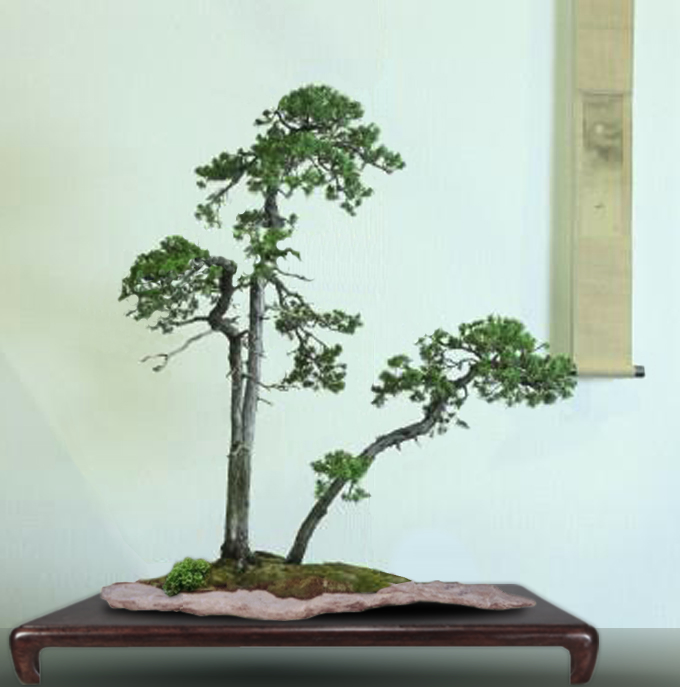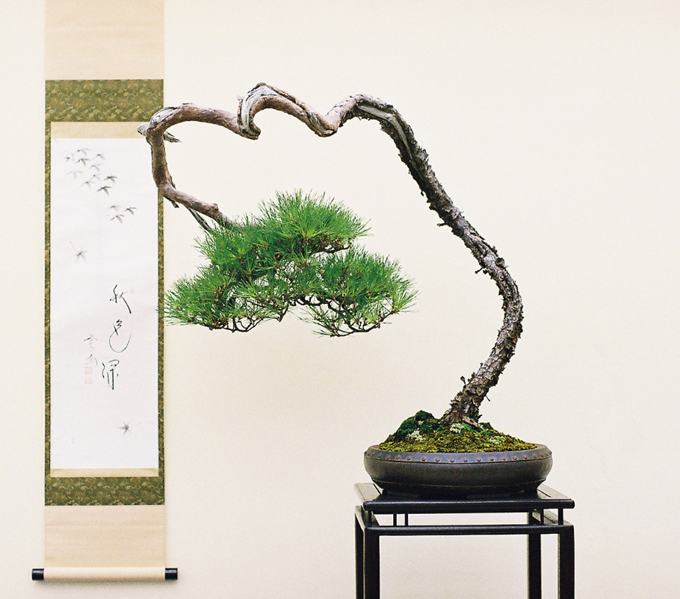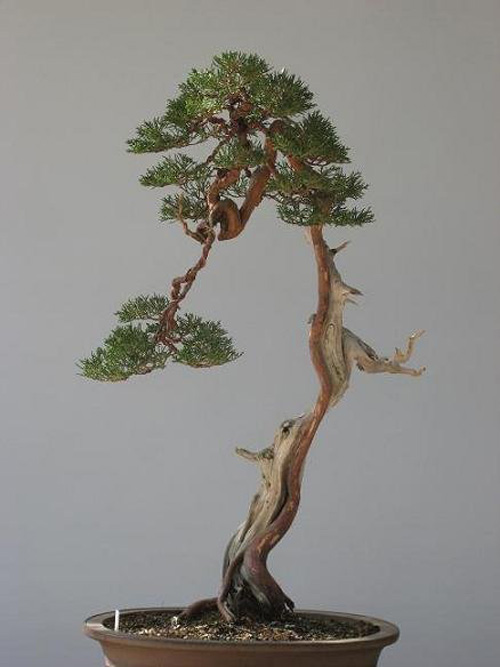 Recognize this planting? It was posted day before yesterday, though now there has been some changes. Andy Rutledge did the digital pruning and repotting to enhance its bunjin-ness, though I’m not so sure he’d say it quite that way (here’s what he did say about it: Even with a very few, but vital adjustments (mostly reduction), the pines begin to take on the bunjin quality).
Recognize this planting? It was posted day before yesterday, though now there has been some changes. Andy Rutledge did the digital pruning and repotting to enhance its bunjin-ness, though I’m not so sure he’d say it quite that way (here’s what he did say about it: Even with a very few, but vital adjustments (mostly reduction), the pines begin to take on the bunjin quality).
Wabi Sabi
Our previous post elicited one of our best discussions yet. Thanks in large part to Andy Rutledge‘s comments. Here’s a quote from Andy that goes to the heart of the matter: “Bunjin is almost entirely concerned with wabi-sabi. Wabi, expressing modesty, melancholy, poverty, simplicity, loneliness, quiet dignity. Sabi, portraying great age, transience, patina, impermanence.”
 An indisputable bunjin. It’s a Red pine that I found on Andy’s Bonsai Journal (one of his wallpaper selections). I’ve seen this distinctive tree before with its triple humped back. In fact, I think it has been posted right here on Bonsai Bark.
An indisputable bunjin. It’s a Red pine that I found on Andy’s Bonsai Journal (one of his wallpaper selections). I’ve seen this distinctive tree before with its triple humped back. In fact, I think it has been posted right here on Bonsai Bark.
 There’s something about Red pines and bunjin. This display with scroll and suiseki is from Bonsai Today issue 69 (sorry about the background, I’m still trying to figure out our new scanning program).
There’s something about Red pines and bunjin. This display with scroll and suiseki is from Bonsai Today issue 69 (sorry about the background, I’m still trying to figure out our new scanning program).
 I think this Shimpaku qualifies as bunjin, though I’m not so sure that it expresses wabi sabi quite as thoroughly as the two pines above. It was originally posted on facebook by Mario Komsta and we posted it on Bonsai Bark back in May.
I think this Shimpaku qualifies as bunjin, though I’m not so sure that it expresses wabi sabi quite as thoroughly as the two pines above. It was originally posted on facebook by Mario Komsta and we posted it on Bonsai Bark back in May.
 It’s not everyday that you see a bunjin Pomegranate. I know it says flowering cherry, but why would a cherry have a pomegranate attached? Bonsai Today 69 is gone, but there are still 39 other back issues available.
It’s not everyday that you see a bunjin Pomegranate. I know it says flowering cherry, but why would a cherry have a pomegranate attached? Bonsai Today 69 is gone, but there are still 39 other back issues available.
Thanks for the nice mention, Wayne. I’m glad you enjoyed the virtual mockup and my thoughts on wabi-sabi. Fun stuff. I always enjoy the content here. Keep it up!
Andy,
Thanks and you are welcome!
-w